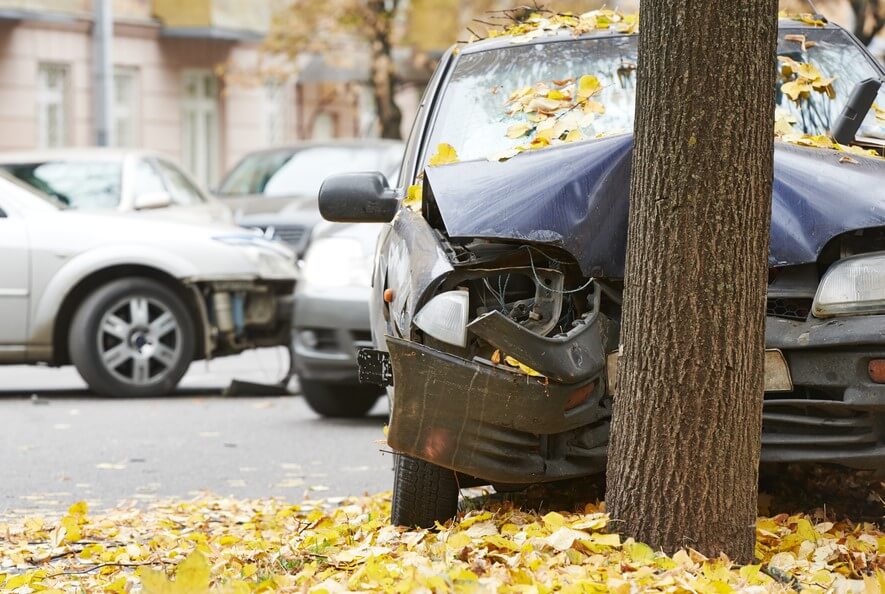What Does Full Coverage Mean?

When you’re driving your car around town or on long trips, you want the peace of mind that comes from having insurance. Unfortunately, automobile insurance is a topic that can be very confusing for many drivers.
And one of the most confusing terms in insurance is “full coverage.” What does it cover, and what does it not cover? What are the pros and cons? Without this information, you may not know which type of insurance is right for you and your lifestyle.
Ready to get the answers you’ve been wanting? Keep reading to learn everything you need to know about full coverage insurance.
What Is Full Coverage Insurance?
Our guide will explore the many aspects of full coverage insurance. But we need to start by answering the basic question: what does the term “full coverage” actually mean?
Full coverage is not a single type of insurance. Instead, it is a combination of different kinds of insurance that ultimately offers your car more robust protection. Most of the time, full coverage insurance consists of liability insurance, collision insurance, and comprehensive insurance.
For the most part, “full coverage” lives up to its name in the sense that it provides the best possible protection for your automobile. But you’ll still need to pay your deductible, and you should be aware that full coverage insurance isn’t the best choice for every driver.
What Goes Into Full Coverage?
We have identified the three types of insurance that go into full coverage insurance. But what protections do each of these insurance types offer to you as a driver?
Liability insurance is an absolute requirement in almost every state (though you’re off the hook if you live in New Hampshire). This coverage pays for any damages you cause through your driving. In some cases, determining whether you are actually liable may become a matter for a court to decide.
Collision insurance is pretty self-explanatory. This insurance helps pay for damages to your car (or even a replacement) after a collision with another vehicle or various objects (like fences, guard rails, trees, etc.).
Finally, comprehensive insurance covers damage to your vehicle when it is not moving (unlike collision insurance, which requires the car to be in motion). From natural accidents such as falling trees to things like your car being vandalized or burglarized while parked, this insurance will take care of everything.
Each one of these types of insurance offers its own protections and benefits. And getting all of these types of insurance is the only way you can get the “full coverage insurance” you desire.
Benefits of Full Coverage Insurance
As great as full coverage insurance is, it is not a requirement for driving. And as we noted before, not every driver needs it. To figure out whether or not you need it, let’s look at some of the specific benefits full coverage insurance offers.
The biggest benefit is that you know your car is covered from most kinds of damage. Someone driving around with only liability insurance, for example, will be in an awkward position if they collide with another car and their vehicle is totaled.
Surprisingly, full coverage insurance is also good for those who are on tighter budgets. That’s because the cost of paying for the insurance is far cheaper than making payments on a new car or paying for expensive repairs to your old car.
And as we mentioned before, full coverage insurance will replace a vehicle if it is totaled. This is especially important if you are driving a newer car and you want to make sure it is protected, both while you are driving and while it is parked.
And the final benefit is that you can customize certain aspects of your insurance coverage. While we will review more coverage options, you can rest assured you will have control over what you want in your insurance plan.
Drawbacks of Full Coverage Insurance
We have reviewed several key benefits of full coverage insurance. While these benefits are situationally useful, they are not great for all drivers in all situations. To get a better idea of whether you need it, it’s important to look closely at the drawbacks of this coverage.
The obvious drawback is that your insurance costs will go up as you take on more coverage. While this is still cheaper than buying a new vehicle, some may struggle to make the insurance payments on a more robust coverage plan.
And you will still need to pay a deductible before you get any of the benefits of this coverage. While this is an unfortunate aspect of insurance coverage, the need to pay first often comes as a surprise to full coverage holders.
Speaking of claiming benefits, your premiums typically go up after you do so. So as important as full coverage insurance is, frequently taking advantage of it will make this coverage progressively more expensive.
What Does Full Coverage Actually Pay For?

So, what are you actually getting out of full coverage insurance? Let’s take a brief look back at your specific benefits.
Thanks to liability insurance, you are protected against damages you cause up to the limits of your coverage. And the collision insurance helps pay for damage to your car according to the vehicle’s fair market value. If there is another driver who does not have insurance or the collision is your fault, then the amount you are paid will have your deductible subtracted first.
And even if you are at fault, this full coverage insurance will pay for the medical treatment you and any potential passengers will need. If an uninsured driver strikes you, full coverage will also pay for any injuries you receive.
Finally, comprehensive insurance helps protect your car against theft and even against natural damage. But as we are about to review, there are certain limits to what full coverage insurance can do for you.
What Full Coverage Insurance Doesn’t Actually Cover
When it comes to the limits of full coverage insurance, the devil is in the details. For example, things like liability insurance can only pay out up to your coverage limits. If those limits are low, then coverage is correspondingly low.
And collision insurance pays out relative to the market value of your vehicle. If the vehicle is old, you may not get much of a payout if a collision occurs.
Aside from that, there are some very specific scenarios that full coverage insurance doesn’t cover. This includes intentional damage you do to the vehicle and damage caused if you are using the vehicle to make official deliveries or as part of a rideshare program.
You will also generally not be protected if you are engaging in certain criminal activities involving your car. This primarily refers to acts such as street racing. And you may not be covered if the damage to your vehicle comes from any off-road driving or off-road activities you participate in.
While very rare, you should also be aware that full coverage insurance does not protect against damage, destruction, or confiscation of the vehicle by local law enforcement or governmental agencies.
Knowing Your Limits
There is no one-size-fits-all insurance package. It is up to each driver to determine the level of coverage they need. Besides determining the types of extra coverage (for example, getting collision insurance and comprehensive coverage on top of liability insurance), you must also determine the limits you are willing to pay for.
How do these limits work in relationship to your insurance coverage? Basically, the limit defines exactly how much money the insurance company will pay if something happens. But if there is damage beyond that coverage amount, you will be responsible for paying it yourself.
Insurance limits can go very high. For example, you can get coverage for up to $500,000 per accident and even get specific limits for things like property damage that extend beyond $100,000. And limits for bodily injury can extend past $250,000.
Your state will define a certain minimum amount of coverage you need. However, it is usually better (and safer) to have more than the minimum.
There is just one catch: while full coverage and high limits can bring great peace of mind, they are not always cheap. It is up to each driver to figure out how much of a limit they want versus how much they are willing to pay on insurance every month.
What’s Next?
Now you know more about what full coverage insurance is and its pros and cons. But do you know who can help you find answers to more of your automobile insurance questions?
InsureOne specializes in bringing direct answers to drivers just like you. Start your free car insurance quote online, over the phone, or at one of our offices near you. Find the quality coverage you need at a great price today.


